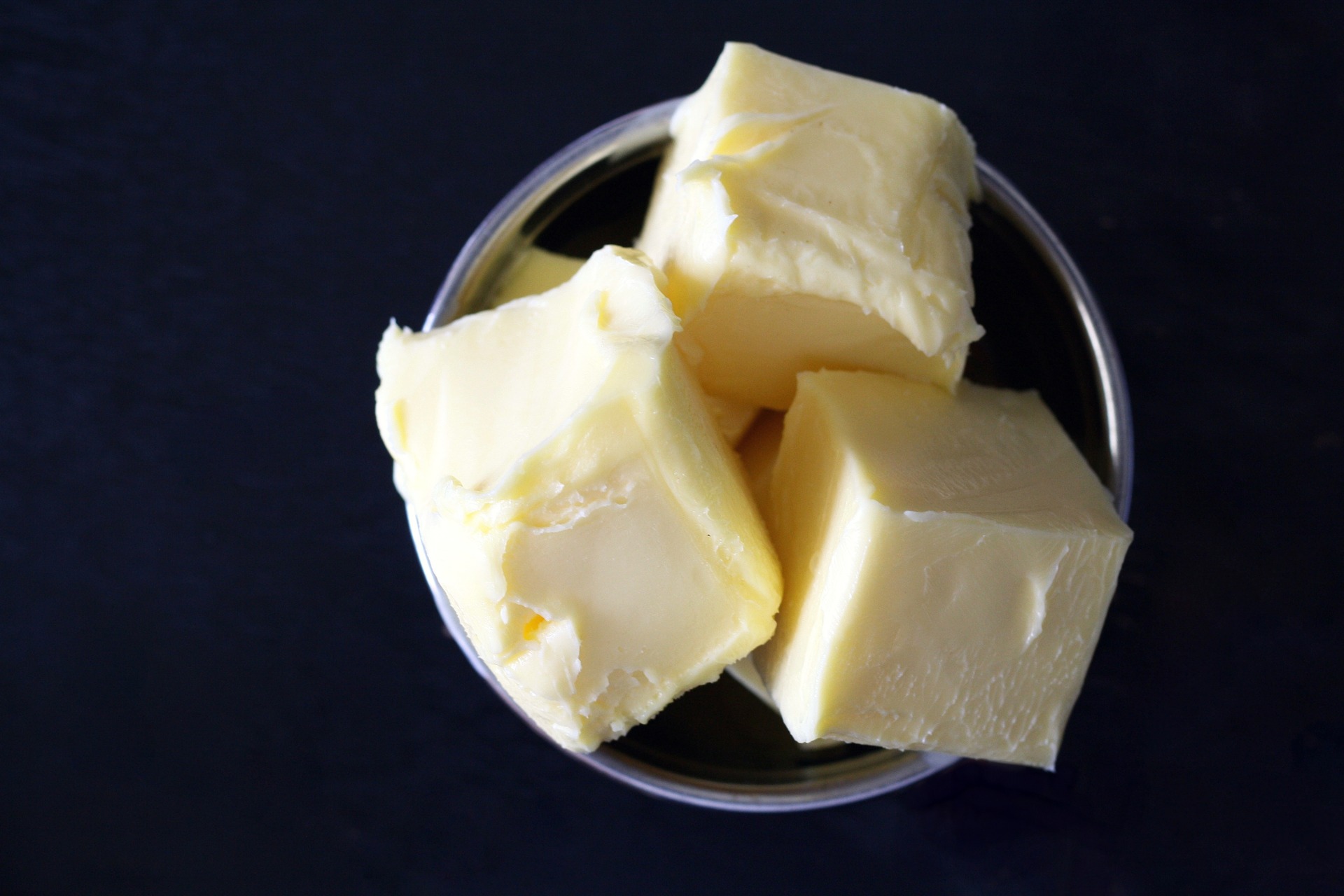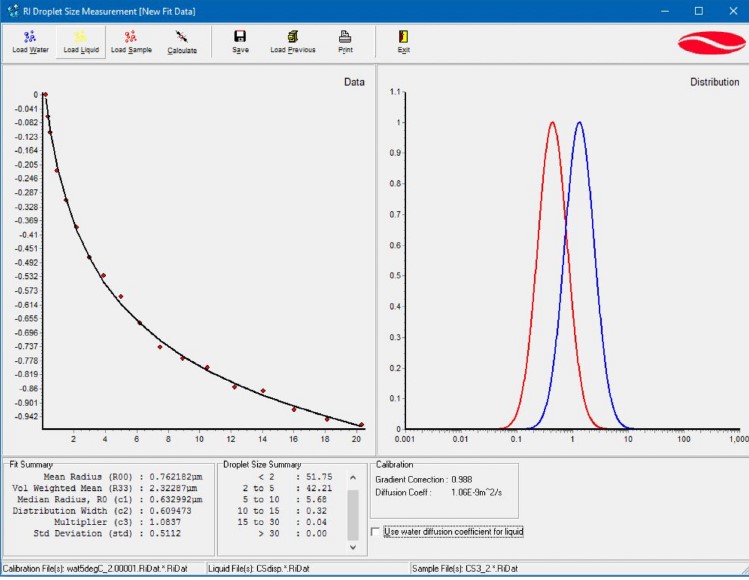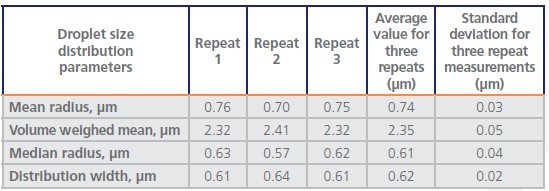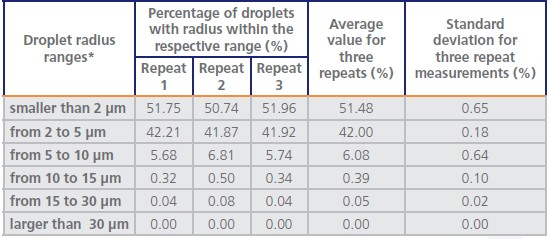Products
Applications
Learning
 Part of the Oxford Instruments Group
Part of the Oxford Instruments Group
In many industries, there is a requirement to reliably and simply determine the droplet size distribution in the dispersed phase of an emulsion without disrupting the sample structure. The MQR time-domain Nuclear Magnetic Resonance (NMR) spectrometer fulfils this requirement with technology that provides a non-destructive method for measuring the distribution. Sample preparation is simple and results are fast and accurate. The use of the MQR allows more definitive and accurate formulation of new products, increased consistency in manufacturing operations, better process control and ultimately reduced costs.

Application
An emulsion is a mixture of two or more immiscible liquids which form a system of dispersed droplets (dispersed phase) separated by the continuous phase matrix. Spreads, margarine, mayonnaise, salad dressing, crude oil and paints are examples of emulsion products and materials. Emulsions remain stable and keep their structure (the droplets do not coalesce) for a period of time under certain conditions.
The droplet size distribution (DSD) is an important characteristic of emulsions. Droplet size analysis by NMR is used as an effective technique for the quality control of raw materials, characterisation of products at different stages of manufacturing and for monitoring properties of new products in research and development. Droplet size measurements help product developers and manufacturers achieve the required properties of emulsions and optimise production costs.
Advantages of NMR
The NMR method is applicable to a wide range of products and materials and in contrast to other techniques (e.g. optical microscopy and electric sensing) is much less destructive and can be quickly performed on a sample “as is”. This means that sample structure distortion is minimised and the use of hazardous solvents, contrast agents or any other testing fluids is avoided, allowing multiple repeats of NMR measurements and further analysis of the same sample by other techniques. From a practical point of view, NMR measurements can be routinely performed by non-NMR experts using intuitive and user-friendly software which provides step-by-step instructions.
Method
The time-domain NMR method for analysing droplet size distributions is based on the phenomenon of restricted diffusion, where the effective mobility of the dispersed phase molecules moving within the droplets is significantly lower compared with that of the equivalent bulk liquid due to interactions with the droplet walls. This means that information about droplet size can be evaluated from NMR diffusometry measurements.
The raw data are acquired in the form of NMR signal diffusion decays. For an emulsion sample, where continuous and dispersed phases are present, both these components produce an NMR signal. In order to collect NMR data only for the dispersed phase, the signal from the continuous phase is removed by applying a suitable T1 relaxation filter, followed by a pulsed-field gradient (PFG) diffusometry protocol. To improve the signal selection further, the sample temperature can be maintained at a certain value by using a variable temperature NMR probe (VT probe). Under such conditions, the effective T1 relaxation time of the continuous phase is much shorter than the relaxation time of the dispersed phase, and the efficiency of the T1 filter becomes even better. This approach is used for the DSD analysis of dairy products (water-in-oil emulsions) where the samples are measured at a temperature of +5°C.
The measurement protocol consists of four steps:

Figure 1: The droplet size distribution results obtained after the fitting of NMR diffusometry data for a butter sample. The experimental diffusion decay (•, the red solid circles) and the log-normal fitting curve (—, the solid black line) are shown in the left-hand graph window. The volume-weighed droplet size distribution (—, the blue curve) and the mean size distribution (—, the red curve) are plotted in the right-hand graph. The numerical parameters of the distribution are listed in the “Fit Summary” and “Droplet Size Summary” tables below the data chart.
The data analysis is carried out using a log-normal distribution of diffusion coefficients in a separate piece of provided software. The fitting results are reported as a graph of the distribution function and as a set of the distribution function parameters (see example in Figure 1): the mean radius of droplets (R00), the volume-mean radius (R33), the median radius R0, the distribution width (σ) and the percentage of droplets with the size falling in the predefined radius ranges. The radius ranges can be specified by users.
Sample Preparation
The NMR method for measuring droplet size distribution function requires four samples:
Samples (1) to (4) are transferred into suitable NMR tubes to the required sample height. The samples must be conditioned at the required temperature in a conditioning block or in the VT probe of the MQR analyser for a suitable period of time. The DSD software allows a time delay to be set to temper the sample prior to measurement.
NB:
Tables 1 and 2 show that NMR has good repeatability for the evaluation of the droplet size distributions.
Conclusion
The NMR technique is an accurate and repeatable method for defining droplet size distributions in a wide variety of emulsions. Sample preparation for the NMR measurements is simple, does not distort the structure of emulsions and does not require hazardous solvents or contrast (testing) additives meaning that the emulsion is analysed “as is”. The NMR technique is non-destructive, so the same sample can be measured several times before being analysed by other techniques.
Table 1. Repeatability of NMR measurements for droplet size distribution parameters: Butter sample

Table 2. Repeatability of NMR measurements for content of droplets with specific radius: Butter sample

* The number of the radius ranges and their numerical borders can be defined by the user
For more information email magres@oxinst.com
Learn more about MQR Learn more about Droplet Size
